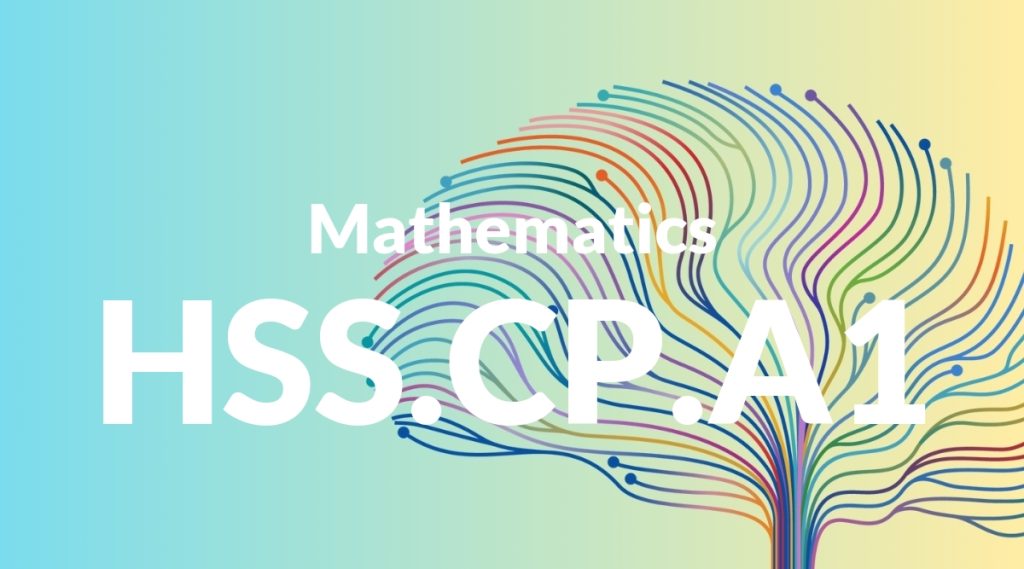Standard: HSS.CP.A1 – Describe events as subsets of a sample space (the set of outcomes) using characteristics (or categories) of the outcomes, or as unions, intersections, or complements of other events (“or,” “and,” “not”).
Grade level: High School: Statistics & Probability
Subject: Mathematics
Domain: Conditional Probability & the Rules of Probability
Teacher Overview
This standard focuses on understanding how to describe events within a sample space using characteristics and set operations. This is crucial for developing a deeper understanding of probability, which is essential for many real-world applications, including statistics, data science, and risk assessment. Students should be comfortable with basic set theory and fundamental probability concepts. They should know how to calculate simple probabilities and understand terms like union, intersection, and complement.
Mastering this standard will enable students to tackle more advanced probability topics, such as conditional probability and Bayes’ Theorem. They will be equipped to analyze and solve complex real-world problems using probability.
Common Misconception 1
A common misconception is that all outcomes in a sample space are equally likely. This is incorrect because different events can have different probabilities based on their characteristics. For example, in a deck of cards, drawing a heart is less likely than drawing any card.
Intervention 1
To address this misconception, provide students with varied examples where probabilities differ. Use tools like probability trees and real-world scenarios to illustrate how and why probabilities can vary.
Common Misconception 2
Another misconception is confusing the union and intersection of events. Students might think that ‘or’ and ‘and’ mean the same thing in probability, which can lead to incorrect calculations.
Intervention 2
Utilize Venn diagrams to clearly show the difference between unions and intersections. Give students practice problems that require them to identify and calculate both unions and intersections to reinforce their understanding.
Prerequisite Knowledge
Students should understand basic set theory, including unions, intersections, and complements. They should also be familiar with the fundamental concepts of probability and basic counting principles.
Subsequent Knowledge
After mastering this standard, students will be able to apply these concepts to more complex probability problems, including conditional probability and Bayes’ Theorem. They will also be able to analyze real-world situations using probability models.
Instructional Activities
- Create and analyze probability trees for different scenarios.
- Use Venn diagrams to solve problems involving unions, intersections, and complements.
- Conduct experiments or simulations to collect data and analyze the probabilities of different outcomes.
- Solve real-world problems involving probability, such as predicting weather patterns or assessing risk in games.




